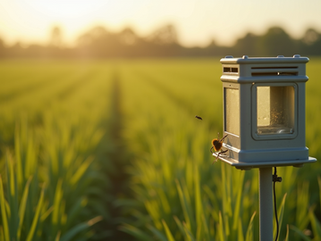top of page


The Importance of Systems in Effective Pest Management
Pest control is a critical aspect of maintaining healthy crops, homes, and environments. Without proper management, pests can cause...
farmroottech2019
21 hours ago4 min read


Why Integrated Pest Management is Crucial for Farmers
Farmers today face numerous challenges, including climate change, fluctuating markets, and crop diseases. One of the most critical...
farmroottech2019
Jun 254 min read


Why is the Pest Infestation Increasing in Coconut Trees? What is the Solution?
T he infestation of the Red Palm Weevil (RPW) is becoming severe. Farmers are finding it increasingly difficult to cultivate coconut...
farmroottech2019
Mar 53 min read
bottom of page





